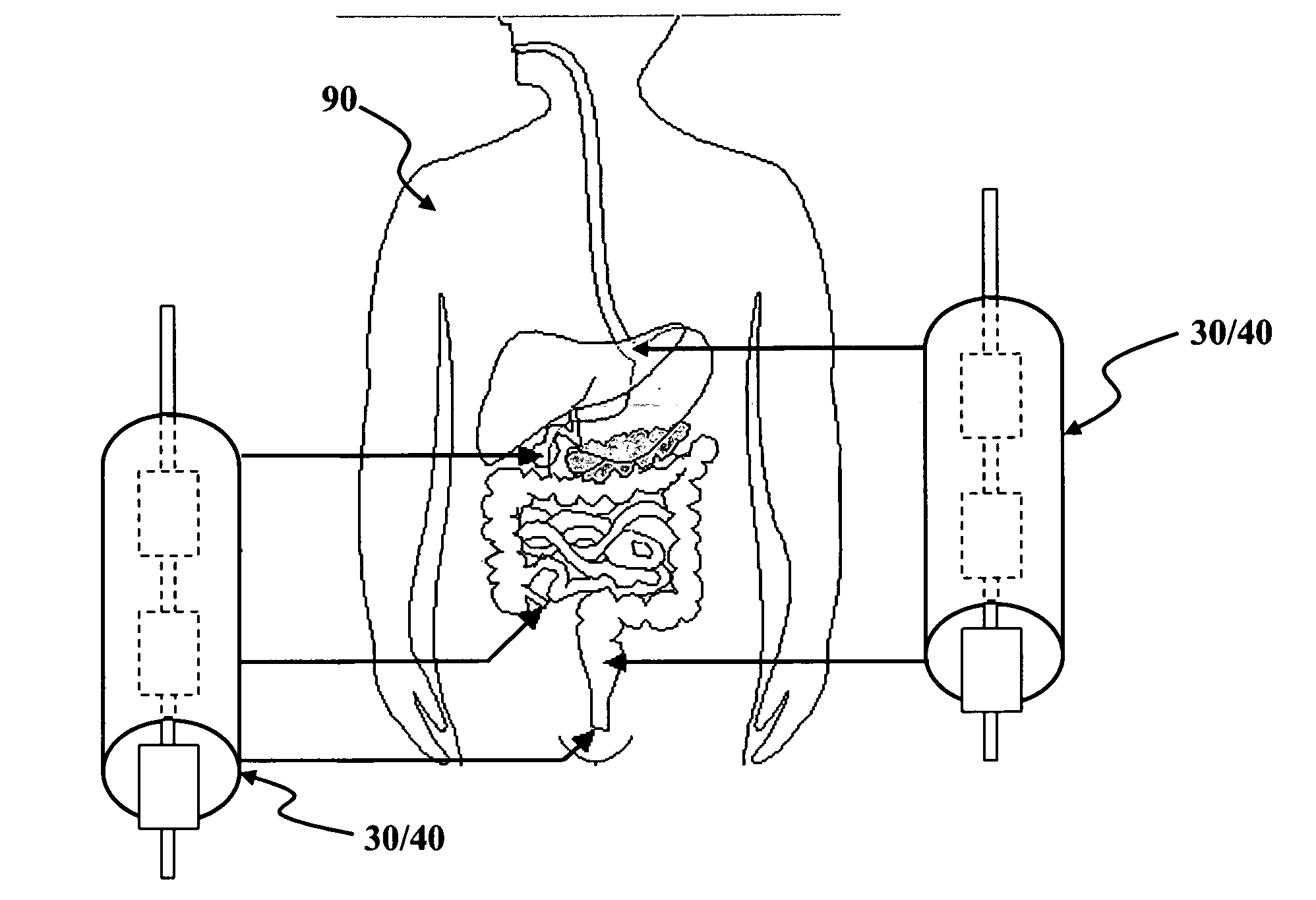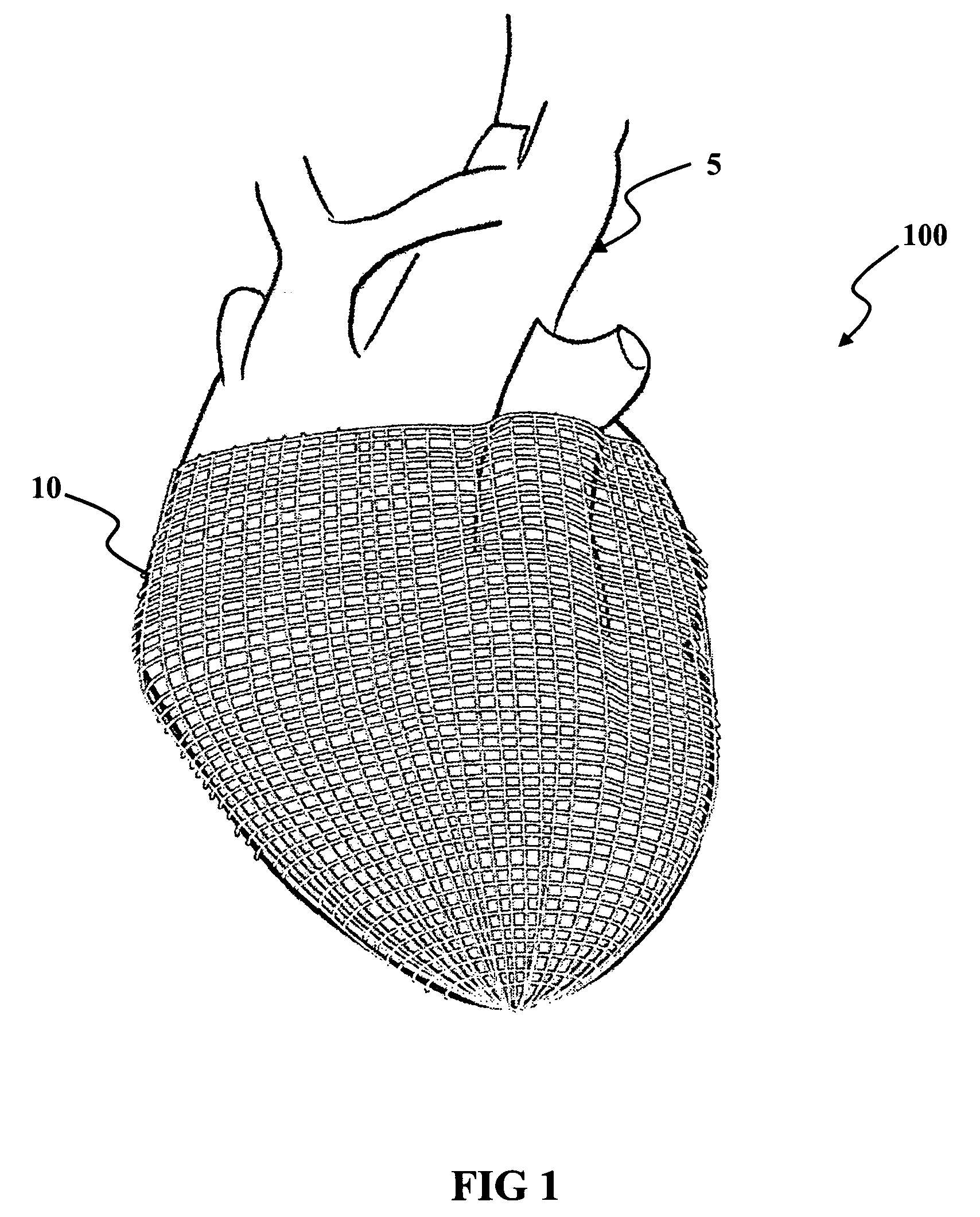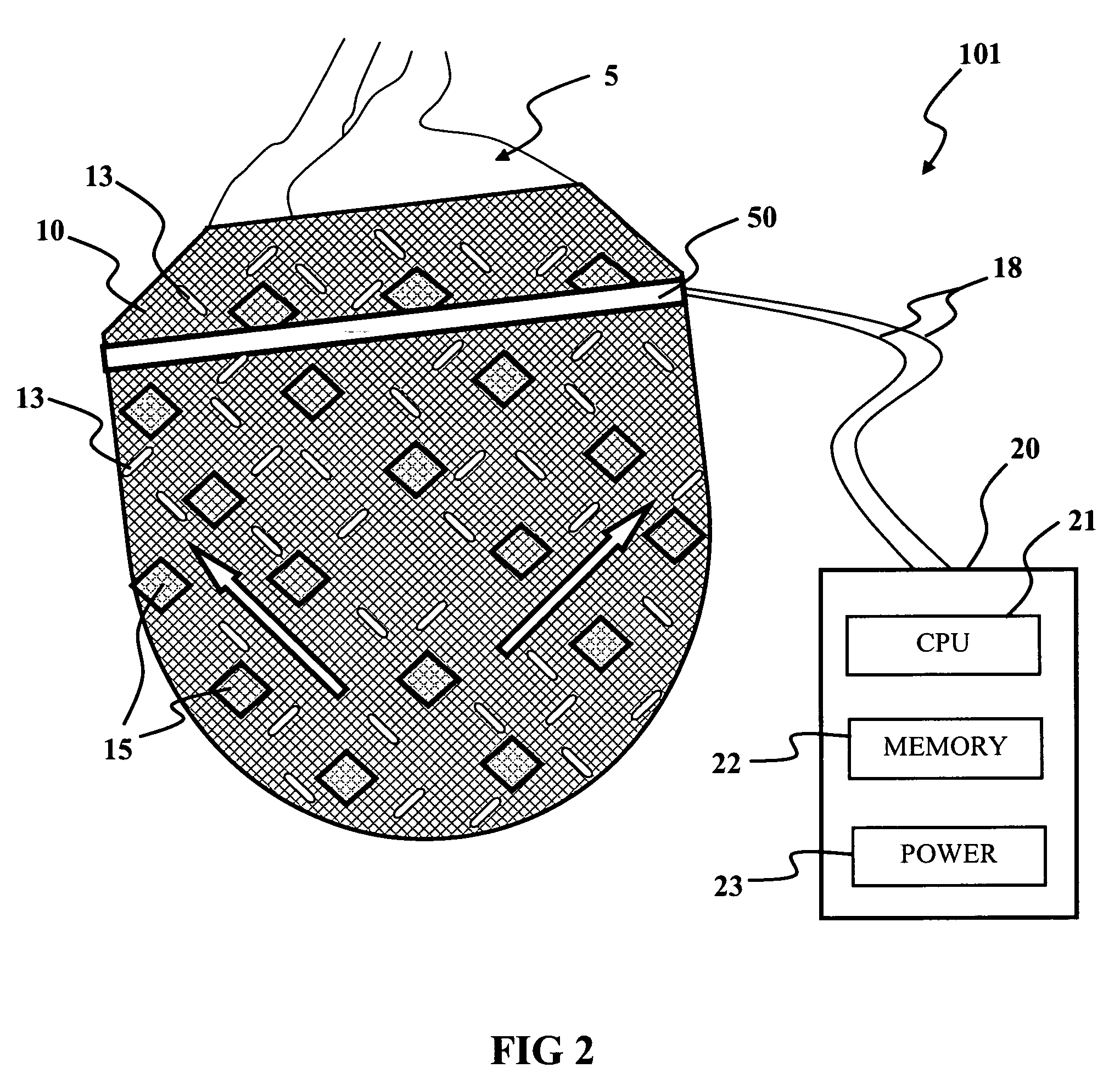Linear electromechanical device-based artificial muscles, bio-valves and related applications
a technology of electromechanical devices and artificial muscles, applied in the field of electromechanical systems, can solve problems such as failure of natural heart, or rather the cardiac tissue of the heart, and direct contact of artificial heart with circulating blood
- Summary
- Abstract
- Description
- Claims
- Application Information
AI Technical Summary
Problems solved by technology
Method used
Image
Examples
Embodiment Construction
[0055] The particular values and configurations discussed in these non-limiting examples can be varied and are cited merely to illustrate at least one embodiment and are not intended to limit the scope thereof.
[0056] A natural human heart includes a lower portion comprising two chambers, namely a left ventricle and a right ventricle, which function primarily to supply the main pumping forces that propel blood through the circulatory system, including the pulmonary system (lungs) and the rest of the body, respectively. Hearts also includes an upper portion having two chambers, a left atrium and a right atrium, which primarily serve as entryways to the ventricles, and also assist in moving blood into the ventricles. The interventricular wall or septum of cardiac tissue separating the left and right ventricles is defined externally by an interventricular groove on the exterior wall of the natural heart. The atrioventricular wall of cardiac tissue separating the lower ventricular regio...
PUM
 Login to View More
Login to View More Abstract
Description
Claims
Application Information
 Login to View More
Login to View More - R&D
- Intellectual Property
- Life Sciences
- Materials
- Tech Scout
- Unparalleled Data Quality
- Higher Quality Content
- 60% Fewer Hallucinations
Browse by: Latest US Patents, China's latest patents, Technical Efficacy Thesaurus, Application Domain, Technology Topic, Popular Technical Reports.
© 2025 PatSnap. All rights reserved.Legal|Privacy policy|Modern Slavery Act Transparency Statement|Sitemap|About US| Contact US: help@patsnap.com



